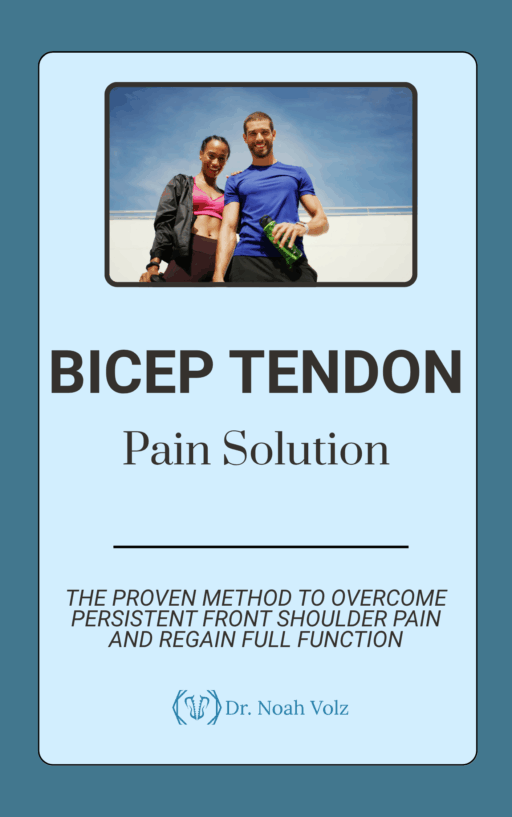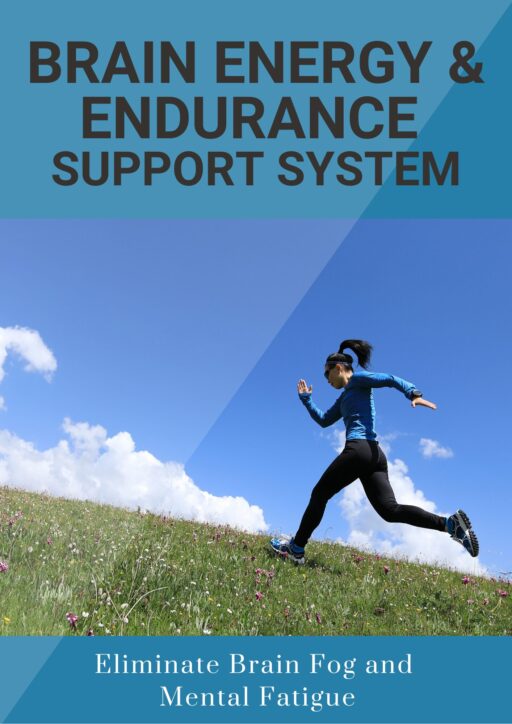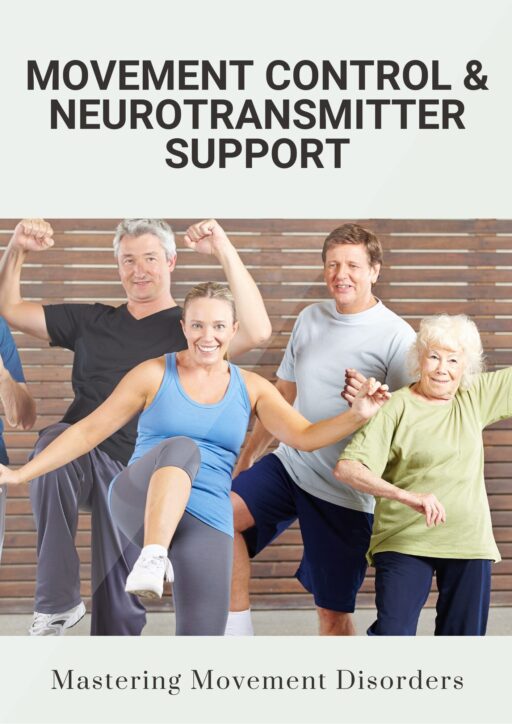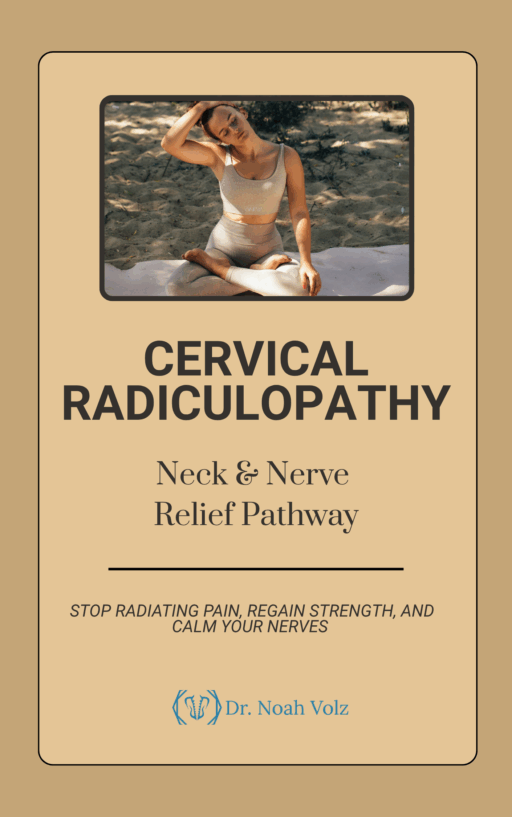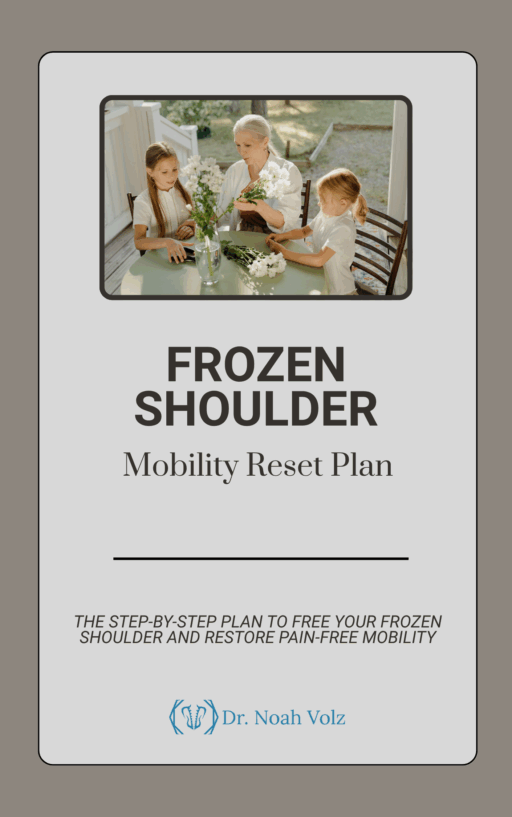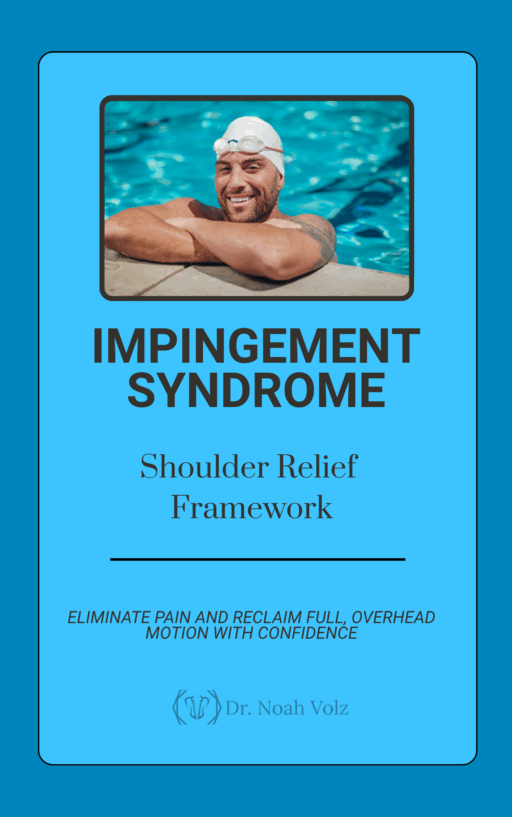Are you tired of living with persistent shoulder pain in Medford? Discover a compelling story of hope and healing as we delve into the world of SLAP (Superior Labrum Anterior Posterior) injuries. In this article, we’ll follow a Medford resident’s journey, exploring the causes, symptoms, and effective treatment options for SLAP injuries. Let’s embark on a path towards renewed shoulder health and a pain-free life.
SLAP Injuries in Medford
Meet Sarah, a Medford resident who, like many others, is unaware of the crucial role played by the glenoid labrum in her shoulder’s stability. Just like a guardian, the labrum deepens the socket and serves as an anchor for for the long head of the biceps tendon which extends into the anterior and posterior portions of the labrum, protecting the shoulder from injury (1).
The glenoid labrum is a oval shaped rim of fibrocartilage that surrounds the entire glenoid socket. (4-6) The inferior labrum is tightly attached to the glenoid rim. The superior labrum has a less secure attachment to the glenoid socket which makes it more “meniscus like.” (8) The superior surface of the labrum is also where 50% of the long head of the bicep tendon becomes the labrum. Approximately fifty percent of the glenoids depth is from the labrum. (11) like the meniscus of the knee, the labrums blood supply decreases with age. (12,13)
Causes of SLAP Injuries in Medford
Sarah stumbles upon an alarming statistic: SLAP injuries are more prevalent than she realized, affecting up to 25% of individuals undergoing shoulder arthroscopy in Medford (2,3).
She learns that SLAP injuries can stem from sudden trauma such as falls, direct impacts, or overhead motions. Labral tears can be the result of repetitive microtrauma. (14) If it is causes by injury, it is because of compression of the shoulder or traction downwards on the shoulder. (14) This is usually due to a fall or a direct blow to the shoulder. (14) This can happen from a fall onto an outstretched arm. (14)
SLAP lesions are most common in athletic populations, particularly those requiring overhead motions. (15) As was mentioned earlier the long head of the bicep inserts onto the labrum. One of the jobs of this tendon is to stabilize the shoulder and stop it from dislocating. This tendon also moves the top of the arm bone downward when the arm is raised overhead in order to stop it from compressing the labrum and subacromial contents. It protects the shoulder when it is healthy. When it is not healthy repetitive contraction of the bicep can rip a piece of the labrum off and if not addressed properly can cause problems as the tear progresses. (15)
SLAP injuries are almost never isolated problems and usually accompany rotator cuff dysfunction. The irritated rotator cuff tendons lose their ability to depress the top of the arm bone. Over time this can rip the labrum from its attachment. (16) Other possible problems that will show up with SLAP injuries are Bankart lesions (22% of SLAP cases), A/C arthrosis, instability and supraglenoid ganglion cysts. (17,19) The most widely accepted classification system for these injuries is as follows:
- Type 1- fraying or degeneration at the margins of the glenoid labrum. No detachment or biceps tendon avulsion.
- Type 2- detachment of the glenoid labrum from the bony rim. Unstable biceps anchor that may be lifted during muscular contraction.
- Type 3- the injury has progressed to a “bucket handle” displacement of the superior labrum into the glenohumeral joint. Is still attached to the glenoid rim and biceps tendon.
- Type 4- There is a partial rupture of the long head of the biceps tendon in addition to the Type 3 injury.
The Telltale Signs: Recognizing and Understanding SLAP Injuries in Medford
Sarah’s daily life is plagued by the deep, persistent shoulder pain that intensifies when she engages in overhead or cross-body activities. She’s no longer alone as she discovers a community of Medford residents experiencing similar symptoms, including popping, clicking, grinding, or catching sensations. The severity of complaints is often equal to the complexity of the injury and can be a minor nuisance or completely disabling. (20,21) There is often weakness and stiffness that will limit athletic performance, particularly in overhead athletes. A common complaint is having a “dead arm.” (20,21) Pinching, slipping, apprehension or “looseness” are indications that there is instability from a more severe presentation.
A Ray of Hope: The Journey to Diagnosis in Medford
Sarah feels relief as she encounters a compassionate Medford chiropractor who understand the complexities of SLAP injuries. Because SLAP lesions often occur in conjunction with shoulder problems evaluation can be challenging. Your chiropractor may do 24 different orthopedic tests all of which will point to a SLAP tear. (22) With orthopedic tests like the Biceps Load II Test and Active Compression Test (O’Brien Test), her diagnosis begins to take shape, providing clarity in her path to recovery.
In the Biceps Load II test she will have her shoulder out to the side at 120 degrees and externally rotated. The chiropractor will stabilize her arm and continue externally rotating the arm until it reaches it’s limit. Once there she will flex the elbow against the chiropractors resistance. If there is pain this indicates a SLAP tear.
In the Active Compression Test (O’Brien Test, Flexion-Adduction Test) she places her arm at 90 degrees out in front of her and out to the side 20 degrees. She will place the palm up and the chiropractor will push down on the arm. She will repeat this with the palm facing down. If pain is produced when the palm is facing down that is an indication that there is a SLAP tear. (24)
Imaging provides the most definitive diagnosis. Diagnostic ultrasound can be used to find SLAP tears. MRI is useful and gadolinium-enhanced MR arthrography provides the highest sensitivity and specificity for detecting SLAP lesions. (25) On the MRI look for high signal intensity at the site of the biceps tendon anchor on the labrum, increased signal intensity at the superior glenoid fossa, displacement of the superior labrum from the glenoid, or the presence of a glenoid labral cyst. (26)
Tailored Treatment for SLAP Injuries in Medford
Sarah discovers a transformative approach to healing SLAP injuries: chiropractic care. She realizes surgery may not be her best option. A Medford chiropractor guides her through a holistic treatment plan, starting with anti-inflammatory measures and avoiding activities that exacerbate her shoulder pain.
It is recommended to do 6-12 weeks of chiropractic before considering surgical intervention. (27) This is usually effective at pain reduction, enhancing mobility, and restoration of strength. (28) Begin treatment with anti-inflammatory medications and stopping provocative activities (i.e. throwing). (29) Then bring in myofascial release of the subscapularis, infraspinatus, anterior shoulder musculature and the posterior capsule. (30) Adjustments to the neck and upper back are helpful at this stage. Then a flexibility program can be initiated, followed by a strengthening program. The focus will be on re-balancing strength between anterior (pec, upper traps) and posterior muscle groups (lower traps, serratus anterior, rhomboid). Surgical repair rarely is effective for these injuries. Surgeons may perform debridement, suturing, or excision based upon the type of lesion. (31)
Sarah’s Journey to Recovery in Medford
Sarah’s journey takes an exciting turn as she experiences the healing power of myofascial release and targeted adjustments from her Medford chiropractor. A personalized flexibility and strengthening program helps Sarah restore balance to her muscles, rejuvenating her shoulder and enabling her to reclaim an active, pain-free life.
Exercises to help heal SLAP injuries
Conclusion
Sarah’s inspiring journey showcases the hope and possibility for Medford residents living with shoulder pain caused by SLAP injuries. Through her discovery of chiropractic care, Sarah finds relief, strength, and a renewed sense of vitality. If you’re in Medford and longing for a life free from shoulder pain, join Sarah in pursuing a non-surgical treatment path tailored to your needs. Your Medford chiropractor will guide you towards a brighter future, where healing and recovery are within reach. Begin your own story of triumph over shoulder pain by taking the first step and consulting a Medford chiropractor today.
References
1. Knesek M, Skendzel JG, Dines JS, et al. Diagnosis and management of superior labral anterior posterior tears in throwing athletes. Am J Sports Med 2013;41(2): 444–60.
2. Kim TK, Queale WS, Cosgarea AJ, McFarland EG. Clinical features of the different types of SLAP lesions: an analysis of one hundred and thirty-nine cases. J Bone Joint Surg Am. 2003 Jan. 85-A(1):66-71.
3. Kampa RJ, Clasper J. Incidence of SLAP lesions in a military population. J R Army Med Corps. 2005 Sep. 151(3):171-5.
4. Snyder SJ, Karzel RP, Del Pizzo W, Ferkel RD, Friedman MJ. SLAP lesions of the shoulder. Arthroscopy. 1990. 6(4):274-9.
5. Moseley H, Overgaard B. The anterior capsular mechanism in recurrent anterior dislocation of the shoulder. Morphological and clinical studies with special reference to the glenoid labrum and glenohumeral ligaments. J Bone Joint Surg Br. 1962. 44B:913-27.
6. Detrisac DA, Johnson LL. Arthroscopic Shoulder Anatomy: Pathological and Surgical Implications. Thorofare, NJ: Slack Inc; 1986.
7. Soslowsky LJ, Flatow EL, Bigliani LU, et al. Quantitation of in situ contact areas at the glenohumeral joint: a biomechanical study. J Orthop Res 1992;10(4):524–34
8. Williams RJ. Superior Labrum Tears. Medscape. http://emedicine.medscape.com/article/92512-overview#a5. Accessed Feb 12, 2016.
9. Vangsness CT Jr, Jorgenson SS, Watson T, Johnson DL. The origin of the long head of the biceps from the scapula and glenoid labrum. An anatomical study of 100 shoulders. J Bone Joint Surg Br. 1994 Nov. 76(6):951-4.
10. Rockwood CA, Matsen FA, Wirth MA. The shoulder, vol. 1. Philadelphia: WB Saunders; 2009.
11. Howell SM, Galinat BJ. The glenoid-labral socket. A constrained articular surface. Clin Orthop Relat Res 1989;(243):122–5.
12. Williams RJ. Superior Labrum Tears. Medscape. http://emedicine.medscape.com/article/92512-overview#a5. Accessed Feb 12, 2016.
13. Prodromos CC, Ferry JA, Schiller AL, Zarins B. Histological studies of the glenoid labrum from fetal life to old age. J Bone Joint Surg Am. 1990 Oct. 72(9):1344-8.
14. Dessaur WA. (2008). Diagnostic Accuracy of Clinical Testing for Superior Labral Anterior Posterior Lesions: A Systematic Review Journal of Orthopaedic and Sports
15. Andrews JR, Carson WG Jr, McLeod WD. Glenoid labrum tears related to the long head of the biceps. Am J Sports Med. 1985 Sep-Oct. 13(5):337-41.
16. Pagnani MJ, Deng XH, Warren RF, Torzilli PA, Altchek DW. Effect of lesions of the superior portion of the glenoid labrum on glenohumeral translation. J Bone Joint Surg Am. 1995 Jul. 77(7):1003-10.
17. Snyder SJ, Banas MP, Karzel RP: An analysis of 140 injuries to the superior glenoid labrum. J Shoulder Elbow Surg 4: 243-248, 1995.
18. Andrews JR, Carson WG. The arthroscopic treatment of glenoid labrum tears in the throwing athlete. Orthop Trans. 1984;8:44.
19. Mileski RA, Snyder SJ. Superior labral lesions in the shoulder: pathoanatomy and surgical management. J Am Acad Orthop Surg. 1998;6:121–131
20. David A. Cortese and Stephen J. Snyder Superior Labral Anterior-Posterior Lesions of the Shoulder THE ATHLETE’S SHOULDER (Second Edition), 2009, Pages 269-282
21. Bedi A, Allen AA. Superior labral lesions anterior to posterior-evaluation and
arthroscopic management. Clin Sports Med 2008;27(4):607–30.
22. Gabel CP, Yelland M, Melloh M, et al. A modified QuickDASH-9 provides a valid outcome instrument for upper limb function. BMC Musculoskelet Disord 2009;10:161.
23. Roy JS, MacDermid JC, Woodhouse LJ. Measuring shoulder function: a system- atic review of four questionnaires. Arthritis Rheum 2009;61(5):623–32.
24. Godfrey J, Hamman R, Lowenstein S, et al. Reliability, validity, and responsive- ness of the simple shoulder test: psychometric properties by age and injury type. J Shoulder Elbow Surg 2007;16(3):260–7.
25. MacDermid JC, Solomon P, Prkachin K. The shoulder pain and disability index demonstrates factor, construct and longitudinal validity. BMC Musculoskelet Dis- ord 2006;7:12.
26. Cook C et al. Diagnostic accuracy of five orthopedic clinical tests for diagnosis of superior labrum anterior posterior (SLAP) lesions Journal of Shoulder and Elbow Surgery. Vol 21, Issue 1 January 2012, Pages 13–22
27. Guanche CA, Jones DC: Clinical testing for tears of the glenoid labrum. Arthroscopy 19:517-523, 2003.
28. Holtby R, Razmjou B: Accuracy of the Speed’s and Yergason’s tests in detecting biceps pathology and SLAP lesions: Comparison with arthroscopic findings. Arthroscopy. 20:231-236, 2004.
29. McFarland EG, Kim TK, Savino RM: Clinical assessment of three common tests for superior labral anterior-posterior lesions. Am J Sports Med 30:810-815, 2002.
30. Dutton Mark. Orthopaedic examination, evaluation, and intervention. New York: McGraw Hill; 2004.
31. Dessaur WA. (2008). Diagnostic Accuracy of Clinical Testing for Superior Labral Anterior Posterior Lesions: A Systematic Review Journal of Orthopaedic and Sports
-

Bicep Tendon Pain Solution
$50.00 -

Brain Detoxification & Recovery System
$50.00 -

Brain Energy and Endurance Support System
$50.00 -

Brain-Based Movement and Motor Control Training
$50.00 -

Centralized Low Back Pain
$50.00 -

Cervical Radiculopathy: Neck and Nerve Relief Pathway
$50.00 -

Complex Low Back Pain
$50.00 -

Complex Radiating Low Back Pain
$50.00 -

Cross-Pattern Low Back Pain
$50.00 -

Frozen Shoulder Mobility Reset Plan
$50.00 -

Impingement Syndrome: Shoulder Relief Framework
$50.00 -

Mastering Brain Senses: Rebuild Your Hearing, Vision, and Body Awareness
$50.00


